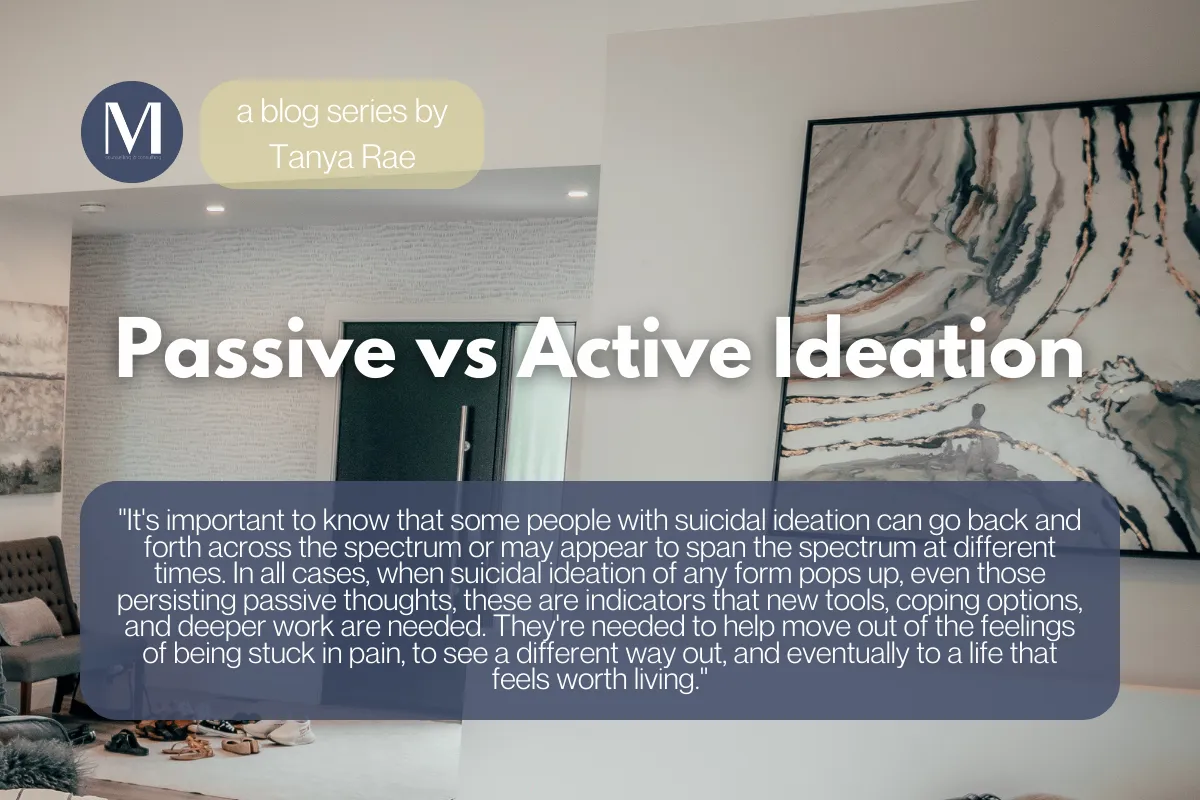the blog
A place for our team to share about topics they are passionate about, in hopes of allowing you to see and understand a bit more behind the faces on these pages.

Passive vs Active Suicidal Ideation
Before we begin, a trigger warning: These posts focus on suicidality. If this is a sensitive topic for you, prioritize self-care and skip these. Our upcoming series will cover different topics.
Now, let's talk about suicidal ideation. I think this is such an important topic since there's so much stigma and misunderstanding around it, which ultimately leads to people struggling with ideation feeling further isolated and even worse. What's needed is an understanding of what's happening so those struggling can feel safe enough to reach out for professional help. Something to know is that emotional pain is registered in the same area of the brain as physical pain. This means when either emotional or physical pain occurs, the person feels pain. They hurt. As I've mentioned in previous posts, suicidal thoughts, also called ideation, though needing to be addressed in therapy, are normal because they arise as a result of the automatic stress response, otherwise known as the "fight or flight response." You can read more about the automatic stress response in my series on "The Stress Response", and in my previous posts in this series. The word "normal" sounds strange here; however, that part of the brain is designed to protect us from pain and harm, and so it's logical that the mind would go to thoughts of ending it if there's a belief that the person is helpless to change their situation, that their circumstances are hopeless and/or they're trapped in their circumstances and there's no way out.
Suicidal ideation is about wishing to die or ending one's own life. Here's the scale - No suicidal ideation, to passive ideation, to active thoughts, to intent. Passive thoughts or ideation can pop up in a passing moment and don't involve any form of plan or any urge or desire to die by suicide. This is quite common. Sometimes passive thoughts can increase and persist without any desire to die by suicide. Active thoughts are higher on the scale and indicate a greater risk. Active thoughts involve planning for suicide or fantasizing about suicide. Those with intent are at the highest risk. Having a high level of intent means the person is motivated to go through with the plan. It's important to know that some people with suicidal ideation can go back and forth across the spectrum or may appear to span the spectrum at different times. In all cases, when suicidal ideation of any form pops up, even those persisting passive thoughts, these are indicators that new tools, coping options, and deeper work are needed. They're needed to help move out of the feelings of being stuck in pain, to see a different way out, and eventually to a life that feels worth living.
Remember, if you're feeling suicidal, it's crucial to reach out to a mental health professional, a helpline, or a healthcare provider who can provide the appropriate support and treatment. At Marquis Counselling we have a number of therapists who are willing to meet you where you're at and help you with find the tools and resources to support you through these incredibly challenging thoughts and ideations.
Til next time,
Tanya Rae
Office Location: 1200 Brock Street South, Whitby, ON. L1N 4L9
© Marquis Counselling & Consulting | ALL RIGHTS RESERVED | TERMS & CONDITIONS | PRIVACY POLICY
